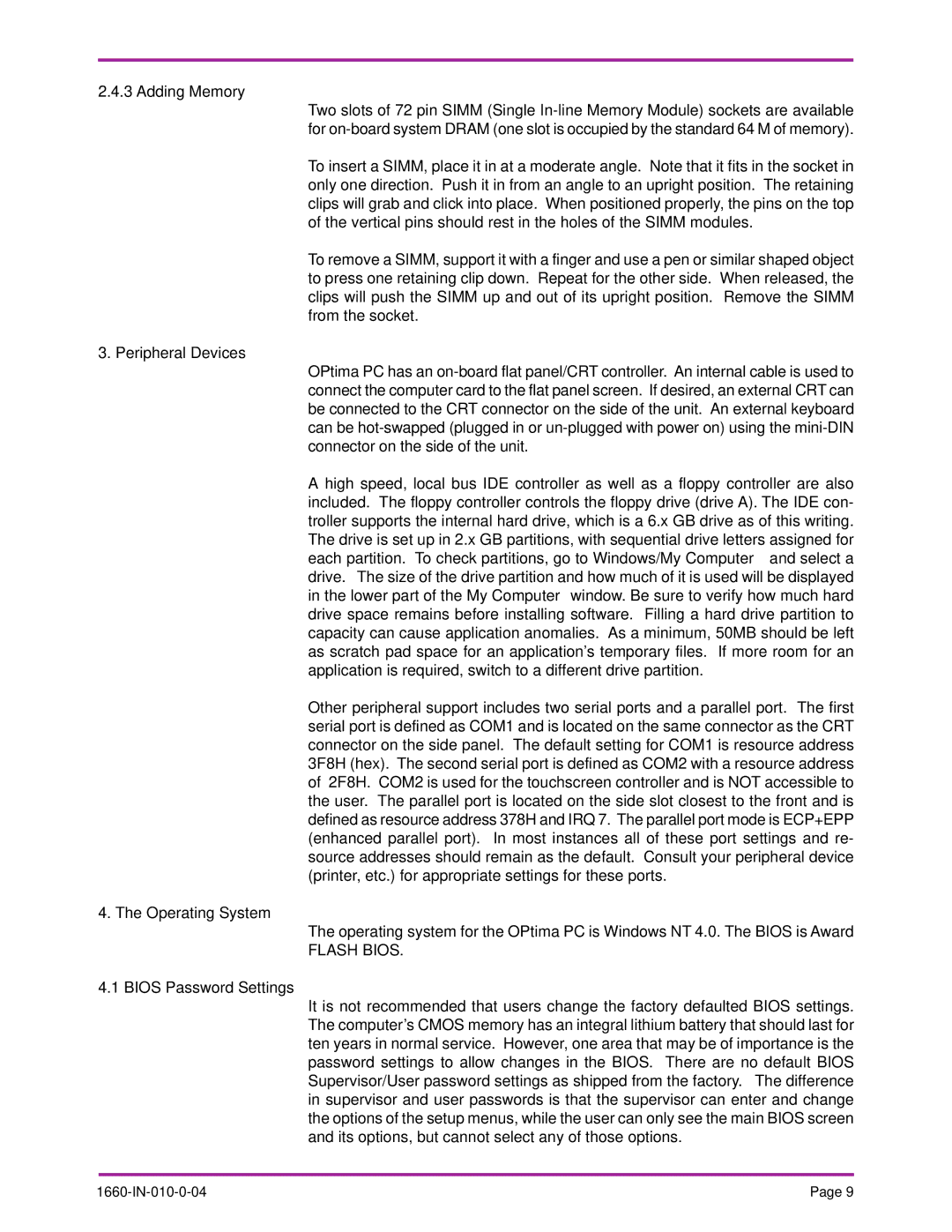
2.4.3 Adding Memory
Two slots of 72 pin SIMM (Single
To insert a SIMM, place it in at a moderate angle. Note that it fits in the socket in only one direction. Push it in from an angle to an upright position. The retaining clips will grab and click into place. When positioned properly, the pins on the top of the vertical pins should rest in the holes of the SIMM modules.
To remove a SIMM, support it with a finger and use a pen or similar shaped object to press one retaining clip down. Repeat for the other side. When released, the clips will push the SIMM up and out of its upright position. Remove the SIMM from the socket.
3. Peripheral Devices
OPtima PC has an
A high speed, local bus IDE controller as well as a floppy controller are also included. The floppy controller controls the floppy drive (drive A). The IDE con- troller supports the internal hard drive, which is a 6.x GB drive as of this writing. The drive is set up in 2.x GB partitions, with sequential drive letters assigned for each partition. To check partitions, go to Windows/My Computer and select a drive. The size of the drive partition and how much of it is used will be displayed in the lower part of the My Computer window. Be sure to verify how much hard drive space remains before installing software. Filling a hard drive partition to capacity can cause application anomalies. As a minimum, 50MB should be left as scratch pad space for an application’s temporary files. If more room for an application is required, switch to a different drive partition.
Other peripheral support includes two serial ports and a parallel port. The first serial port is defined as COM1 and is located on the same connector as the CRT connector on the side panel. The default setting for COM1 is resource address 3F8H (hex). The second serial port is defined as COM2 with a resource address of 2F8H. COM2 is used for the touchscreen controller and is NOT accessible to the user. The parallel port is located on the side slot closest to the front and is defined as resource address 378H and IRQ 7. The parallel port mode is ECP+EPP (enhanced parallel port). In most instances all of these port settings and re- source addresses should remain as the default. Consult your peripheral device (printer, etc.) for appropriate settings for these ports.
4. The Operating System
The operating system for the OPtima PC is Windows NT 4.0. The BIOS is Award
FLASH BIOS.
4.1 BIOS Password Settings
It is not recommended that users change the factory defaulted BIOS settings. The computer’s CMOS memory has an integral lithium battery that should last for ten years in normal service. However, one area that may be of importance is the password settings to allow changes in the BIOS. There are no default BIOS Supervisor/User password settings as shipped from the factory. The difference in supervisor and user passwords is that the supervisor can enter and change the options of the setup menus, while the user can only see the main BIOS screen and its options, but cannot select any of those options.
Page 9 |
